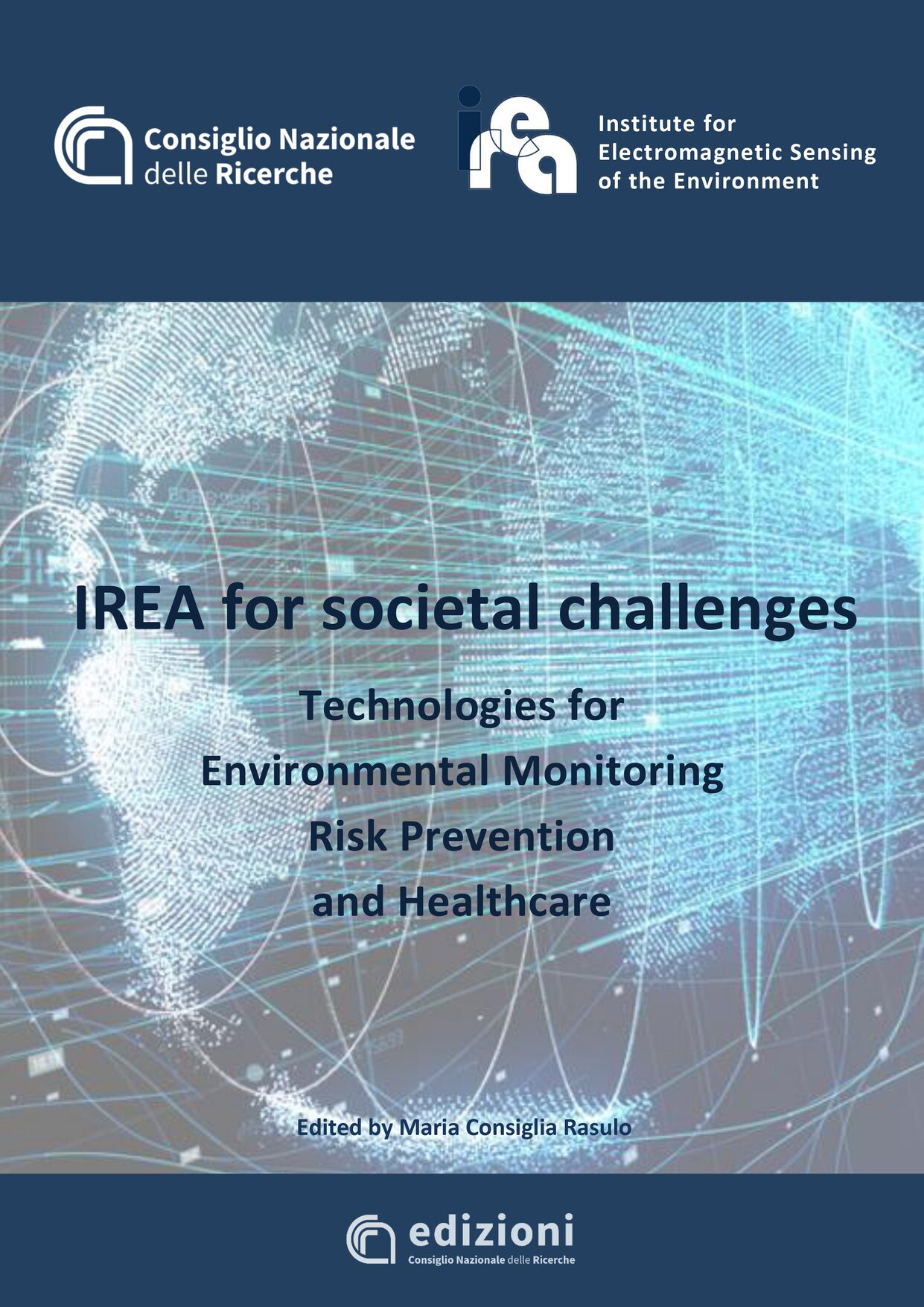STRONGRCraft will develop, test (Attitude, circulation, water & fuel, slosh & vibration, drop) and manufacture a highly performant, lightweight, cost effective with innovative optical Fuel Level Sensor and limited environmental footprint Fuel System (FS). The project will also design, manufacture and install a test rig on the existing Universal Test Rig Platform at the OEM.
Fully supporting the rapid emergence of the high speed compound helicopter, this next generation of FS will demonstrate weight reduction up to 15%, monitored and decreased use of hazardous substances regarding REACh regulation, reduced environmental impact (energy, VOC emissions and waste) with Life Cycle Analysis, optimum between level of performances of the high speed compound helicopter and cost of potential product with a recurring cost estimation, conformance with CS29 and integration of an innovative technology for the optical fuel level sensor. Also, there is plan to access and use the STRONGRCraft results in the sector of Remotely Piloted Aircraft Systems (RPAS).
STRONGRCraft will be carried by a consortium of 4 partners (ASY, SM, CNR-IREA and NLR) with the required specific expertise and a proven track record of experience in RDI programs (e.g. H175 program, SAFUEL). The consortium has the necessary technologies at the expected maturity level to be accessed/used in STRONGRCraft, some of them reflecting first steps already achieved on FS weight improvement (ASY: TRL 2 NG Roll-over valve with lighter materials and TRL2 concept of lightweight piping for several hoses; SM: use of reinforced plastic polymers at TRL5 and use of protective conductive varnish at TRL3; CNR-IREA: TRL3 optical fuel level probe based on TIR; NLR: TRL3 optoelectronic interrogator and SAFUEL test rig). ASY, Coordinator of the project, is the unique EU FS provider approved by aviation authorities worldwide since several years, owning DOA and POA.
The activity of CNR_IREA is devoted to the development and integration of an innovative optical fuel level sensor. In particular, a metal-free fibre optical fuel gauging sensor based on Total Internal Reflection (TIR) has designed and fabricated in collaboration with NLR. The sensor has been designed to work properly in a wide temperature range (-55°C to +70°C) without requiring compensation, furthermore, it is able to detect free water level inside the tank. The use of polymer materials has been preferred, as far as possible, to conventional opto-mechanical materials (glass and alluminum) in order to reduce the weigth and reduce the cost.
The layout of the total internal reflection (TIR) sensor is depicted in figure 2a. The sensor is composed by an equilateral prism, three fiber optic collimators and an optical mirror. A collimator holder ensures the right alignment between the collimator and the prism mounts the fiber optic collimators.
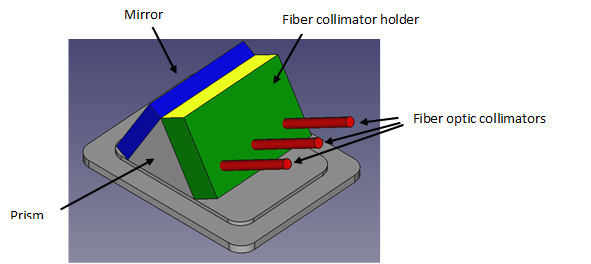
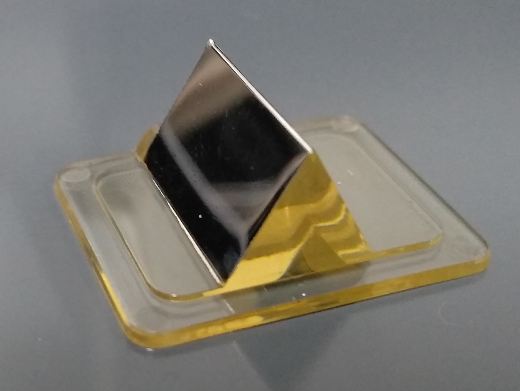
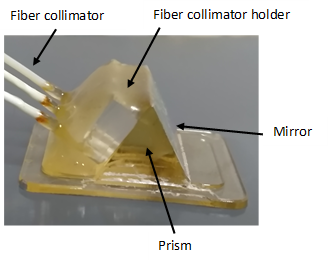
The calibration of the sensor has been performed by performing fuel level measurements have been performed at step of 0.5mm. In figure 3 the response of the sensor when the fuel level increases from 20mm to 26mm is reported. The sensor level is placed at 23mm height. As can be observed the transition between TIR condition to the non-TIR condition is about 1mm. This ensure level detection accuracy of ±0.5 mm.
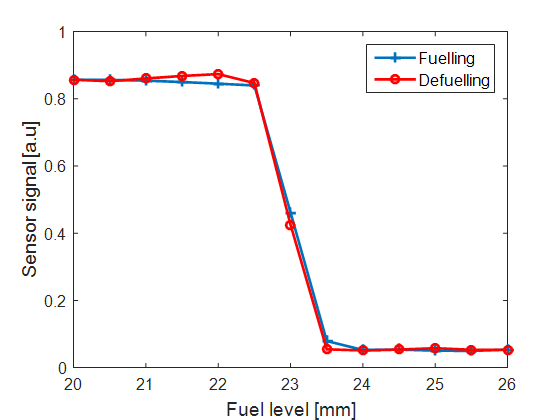
Figure 3 Sensor response when the fuel level increases from 20mm to 26mm



